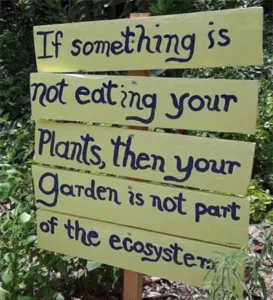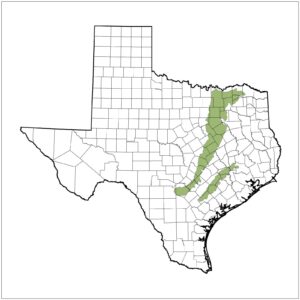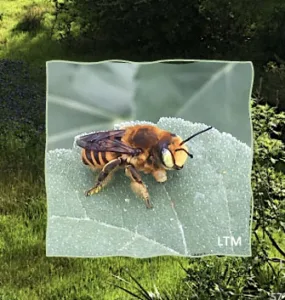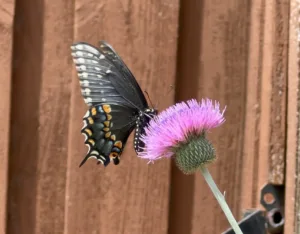Stay in touch with the Dallas Chapter – sign up for our Newsletter, check out our Facebook page for more details and information. Additionally, lots of great information can be found in our Newsletter Archives.
Dallas Chapter’s October meeting: Monday, Oct 21, 2024
“Conserving Texas Native Plant Biodiversity: Seed Banking, Biology, & Research at the Botanical Research Institute of Texas”
Please join seed bank conservation botanist, Kay Hankins, as she leads us on a guided exploration through the journey of a seed from the field to DFW’s very own Conservation Seed Bank housed right here in the metroplex at the Fort Worth Botanic Garden and the Botanical Research Institute of Texas. Along the way, we will also learn more about the importance of plant conservation, the biology of native plant seeds, and some of the many different research projects taking place at FWBG-BRIT behind the scenes to further support native plant conservation throughout the state.
SPEAKER BIO:  Ms. Hankins is the Seed Bank Conservation Botanist at the Fort Worth Botanic Garden and the Botanical Research Institute of Texas. She earned her M.S. in Biology from Sam Houston State University in 2023 where she studied ecological niche modeling and produced a ranked species threat assessment for over 20 invasive terrestrial gastropod crop pests in the continental United States based on habitat suitability predictions generated under both current and future global climate change scenarios.
Ms. Hankins is the Seed Bank Conservation Botanist at the Fort Worth Botanic Garden and the Botanical Research Institute of Texas. She earned her M.S. in Biology from Sam Houston State University in 2023 where she studied ecological niche modeling and produced a ranked species threat assessment for over 20 invasive terrestrial gastropod crop pests in the continental United States based on habitat suitability predictions generated under both current and future global climate change scenarios.
Her interest in ecological niche modeling and its conservation applications was first piqued during her tenure as a Seeds of Success botanical field technician (2019), Geographic Information Systems analyst (2020–2021), and lead botanist (2023) with the Chicago Botanic Garden and Bureau of Land Management in southwestern Idaho, the Mojave Desert, and northern California. In addition, her past experiences working in sustainable agriculture (2018–2019) and molecular systematics research (2013–2018) also helped to further contextualize and drive her interest in plant conservation, biogeography, and climate change. In January of 2024, Kayla returned to her home state of Texas to step into her new role at the Fort Worth Botanic Garden and Botanical Research Institute of Texas where she now applies her diverse skillset to support Texas native plant conservation, research, and education.
Native Landscape Certification Program (NLCP) – Level 3 in Dallas
Dallas Chapter will be offering Level 3 Certification Class to be held November 2nd and 3rd.
NLCP / Level 3 Registration opens August 1st, 2024 at 8:30am.

Dallas Chapter’s October meeting: Monday, October 21, 2024
Meetings are held the 3rd Monday of each month. All meetings are open to members and the public.
Join us starting at 6:30 for social time, chapter announcements and presentations start at 7:00pm
more Meeting and Location info
Can’t make it in person? ZOOM our monthly meetings at: https://us02web.zoom.us/j/83725236133?pwd=MnRoZlRWMEd4ZENkaXdjalpkRFFIdz09
If needed, use: Meeting ID: 837 2523 6133 Passcode: 882399a*

The Blackland Prairie
The Dallas Chapter of NPSOT includes all of Dallas County and the twenty-two cities within its boundaries.
We are in the Blackland Prairie Ecoregion: Average rainfall 28-40 inches with peak rainfall usually in May, Hardiness Zone 8A, average annual minimum temps 15-10 degrees.
Wildflower Planting dates for our area are:
Spring – January 15th thru March 1st
Fall – October 1st thru December 1st
Check this link for a PDF of the USDA’s Hardiness Zone Map for Texas: https://ftp.dot.state.tx.us/pub/txdot-info/library/pubs/cit/hardiness_district.pdf.
Our area is predominately an urban landscape, and the Dallas Chapter’s primary goal is to educate homeowners, businesses, and municipalities on the benefit of planting native landscapes. Each meeting, newsletter, field trip and activity will strive to achieve this goal.
Plant Propagation Guide – A basic guide to sharing your native plants with others through plant propagation. (PDF, 1.33 MB)
Inviting Nature Back Home – A complete guide to updating your landscape for Birds, Bees and Butterflies. (PDF, 2 MB)
see more planting info on our Plant Info page





